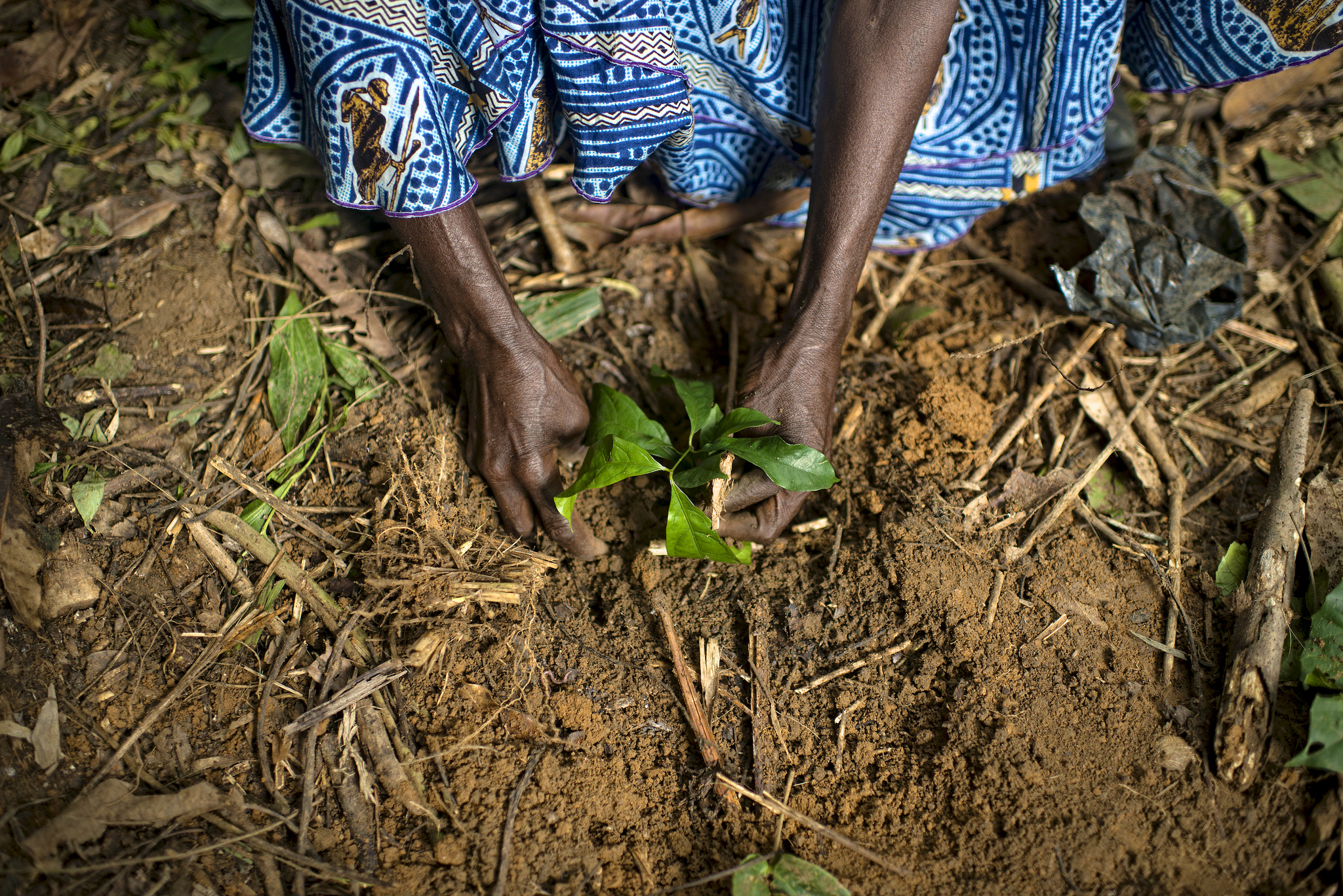The role of forestry and agriculture in mitigating climate change
Peter Holmgren, Director General of the Center for International Forestry Research (CIFOR), explores the fundamental role of forestry, agriculture and landscapes in mitigating climate change.
The Paris Agreement and The Sustainable Development Goals (SDGs) set out a raft of new and challenging global targets for people, the environment, business and development. SDG 13 directly embeds the climate change challenge in the framework. In other words, the global community has explicitly linked its broad development agenda and the climate agenda, clarifying that climate benefits must be part of our investments in the future of humanity.
For forestry, some linkages are explicit, such as SDG 15 concerning the sustainable management of forests, which relates to Reducing Emissions from Deforestation and Forest Degradation (REDD+); and SDG 12, covering corporate responsibility, sustainable consumption and production. At CIFOR, we have concluded in our new strategy that forestry links to all 17 SDGs. This way, we emphasise the essential contributions that forests and trees make to all aspects of sustainable development, including the climate change challenge.
 The path to implementation
The path to implementation
Countries set out their plans for post-Paris Agreement action in their Intended Nationally Determined Contributions (INDCs). Analysis of the 158 INDCs submitted to the UNFCCC prior to COP21 shows that there is a significant gap between the contributions proposed and the emission reductions needed (http://climateactiontracker.org). Even if countries fully implement their INDCs, the world may experience warming of 2.7-3.0°C, therefore countries need to notably elevate the ambitions set out in their INDCs if we are to avoid disastrous climate change.
Forestry, agriculture and landscapes may offer significant additional mitigation or removal opportunities beyond the options elaborated in the negotiations and INDCs.
More importantly, it is clear that improving resilience and reducing vulnerability – the third pillar of the Paris Agreement – by and large means safeguarding the natural production systems on which we depend for food, ecosystem services and economic development. This clearly reflects the sustainable development aspiration of the Paris Agreement and illustrates the important context of the climate change challenge.
Approximately 20-24 per cent of global greenhouse gas emissions are attributed to forestry, agriculture and landscapes. Clearly, better management of the world’s landscapes has a key role to play in reducing greenhouse gas emissions. Yet, most INDCs do not comprehensively include agriculture and forestry in their mitigation targets. A recent study of INDCs in seven countries in Asia, to which CIFOR contributed, found that only two countries include both agriculture and forestry mitigation targets and measures in their INDCs.
Looking beyond the mitigation of emissions, the world’s landscapes have great potential to act as carbon sinks by increasing stocks held in vegetation and soils. INDCs are generally not exploring these potentials at the moment, and more research into the biological and socioeconomic potential is needed.
Even where forestry and agriculture are included in INDCs and national plans, it is unclear how contributions from these sectors will be achieved. Insufficient international support in the form of finance, technology transfer and capacity building hinder many countries’ abilities to implement the adaptation and mitigation measures outlined in their INDCs in agriculture, forestry and other land-use sectors.
Forestry research findings
Forestry and landscapes offer a number of recognised mitigation measures, and research by organisations like CIFOR helps to refine and target these measures to best effect. Four examples highlight the diversity of forestry research that informs the land sector’s contribution in implementing the Paris Agreement.
In doing so, we must consider the future horizons in forestry and landscape management, and incorporate a long-term transition toward sustainable systems. History tells us that active, long-term forest management can increase both productivity and carbon stocks while improving resilience and reducing the risk of wildfires. It is important therefore not to be short-sighted when it comes to forestry, landscapes and climate change.
Ecosystem restoration
Ecosystem restoration is increasingly seen as part of national mitigation efforts and represents the only land sector activity
with considerable potential as a carbon sink. Large-scale restoration  offers both opportunities and challenges for poverty reduction and equitable outcomes.
offers both opportunities and challenges for poverty reduction and equitable outcomes.
Ecosystem restoration efforts are under way through a number of large-scale initiatives. The Bonn Challenge is a global commitment to restore 150 million ha of the world’s deforested and degraded land by 2020, and 350 million by 2030. Supporting this, Initiative 20x20 in Latin America and AFR100 in Africa aim to restore 20 million and 100 million ha of land in the respective regions by 2020 and 2030. And ecosystem restoration is not just about forests: in Indonesia, for example, the Peatland Restoration Agency aims to restore two million ha of degraded peatland over five years, directly addressing the large carbon emissions from peatland degradation.
Ecosystem restoration offers immediate mitigation and adaptation benefits from the land sector. Achieving restoration at scale, however, requires countries to address the drivers behind current land degradation, as well as enabling or hindering policies, in an integrated way. Forestry research underpins ecosystem restoration efforts, and informs the most effective and equitable approaches.
The private sector
The private sector’s role in implementing the Paris Agreement is a fast developing area with rapidly increasing expectations. Many non-state actors – companies, financial institutions and non-governmental organisations – have made bold commitments to reduce deforestation and improve management of forests and agricultural commodity production. The New York Declaration on Forests, which endorsed and extended the Bonn Challenge 2020 target, set out a commitment to cut deforestation in half by 2020 and eliminate it entirely by 2030. The declaration was signed at the United Nations Climate Summit in New York by 30 national governments, 50 private companies and many non-governmental organisations – but it did not specify a plan for how to achieve the targets.
Actions taken by the private sector – for example the elimination of commodity-driven deforestation from agricultural supply chains – will contribute to the achievement of national-level mitigation and adaptation measures and NDCs. Questions remain, however, as to how such actions will be monitored, verified and reported. Private sector commitments do not currently form part of the information requirements related to NDCs or the UNFCCC reporting or transparency frameworks. Research to identify and track the private sector’s potential and actual contributions will help determine how it can best be incorporated into national plans and contribute to Paris Agreement implementation.
Bioenergy
 Bioenergy is widely discussed as a major opportunity by which the land sector can contribute to climate change mitigation in many countries. Indeed, bioenergy constitutes nearly 10 per cent of the world’s energy supply, and there is potential both to increase supply and improve conversion rates. Bioenergy is typically a side-product in land-use systems and should be addressed as an integrated component of these systems. However, current analyses of bioenergy as a climate action often treat bioenergy as a stand-alone action, which has led to a polarised debate.
Bioenergy is widely discussed as a major opportunity by which the land sector can contribute to climate change mitigation in many countries. Indeed, bioenergy constitutes nearly 10 per cent of the world’s energy supply, and there is potential both to increase supply and improve conversion rates. Bioenergy is typically a side-product in land-use systems and should be addressed as an integrated component of these systems. However, current analyses of bioenergy as a climate action often treat bioenergy as a stand-alone action, which has led to a polarised debate.
When seen as a large-scale production system dedicated to mitigating climate change – for example, using crops to generate power to achieve so-called Bioenergy with Carbon Capture and Storage (BECCS) – researchers caution that life-cycle emissions need to be comprehensively assessed. Under current accounting rules, the carbon neutrality of bioenergy and how it is incorporated into carbon accounting methodologies are sometimes questioned.
There is considerable risk in isolating policies for climate impact from bioenergy from wider land use benefits and value chains. Bioenergy is often a valuable and necessary co-benefit in production systems for food or forest products, especially for smallholders. Benefits from bioenergy could be increased through technology development towards better conversion rates, which could also enhance the climate change mitigation potential.
At the same time, it is clear that large-scale bioenergy production has become a highly politicised topic in parts of the global North, with doubts on environmental integrity and the effectiveness of subsidies. Bioenergy is also often portrayed as potentially reducing countries’ abilities to produce food. Clearly, more nuanced and solution-oriented research on bioenergy systems is desirable.
REDD+
REDD+ is an international policy framework to provide financial incentives to reduce emissions from deforestation and forest degradation and to conserve and enhance forest carbon sinks. Completed in 2015, the framework is a key element of the Paris Agreement (Article 5), together with other approaches that include joint mitigation and adaptation. Many countries are studying ways to implement REDD+, and clear signals are needed, for example from the Green Climate Fund, on the level of REDD+ financing available and how it will be operationalised (CIFOR Infobrief 138).
Research on the governance challenges of REDD+ has shown that the collaboration and alignment of central and subnational government levels still has large gaps, including communication and sharing of resources. Lessons can be drawn from the REDD+ experience for implementing NDCs at subnational levels.
The way ahead
The NDC process will provide a framework to move countries’ climate agendas forward and periodically increase their ambition
through the five-yearly revision process. Over time, implementing the  Paris Agreement means that countries need to move away from isolated solutions in individual sectors and towards more integrated approaches involving landscape-level interventions and life-cycle emission accounting.
Paris Agreement means that countries need to move away from isolated solutions in individual sectors and towards more integrated approaches involving landscape-level interventions and life-cycle emission accounting.
The evolving agricultural sector is key to this cross-sectoral thinking. Where expanding agriculture is a key driver of deforestation, integrated landscape interventions are needed to negotiate the trade-offs between the sectors. The expansion of intensive, industrial agriculture and contraction of traditional agricultural practices as populations migrate and become increasingly urbanised will have profound impacts on the landscapes of the future and their carbon outcomes. Research supports this by identifying the different carbon trajectories of different forest–agriculture scenarios.
This multi-sectoral, multi-level harmonisation must be underpinned by research that clarifies the trade-offs and synergies between actions. CIFOR’s research on REDD+ already highlights the frequent gaps between central and subnational government levels, which are also likely to occur with the implementation of NDCs. Research on INDCs in Asia reveals that none of the INDCs reviewed explicitly mention the role of private sector deforestation and sustainability commitments or the role of financial services in reducing emissions. Forestry research such as this offers essential insights and lessons for the implementation of the Paris Agreement.
A final thought
It is abundantly clear that forests and landscapes offer an important part of the solutions for the climate and development agendas. But these solutions are almost always local, small-scale and highly diverse. The climate change debate is often held at a global, intergovernmental level, far from implementation on the ground. A very real challenge is to create a movement among hundreds of millions of small-scale entrepreneurs to include climate actions in their landscape businesses. Mega-scale policy instruments may not always be the most effective method for achieving the changes we need.
Read the full Climate Action 2016/17 Publication here








